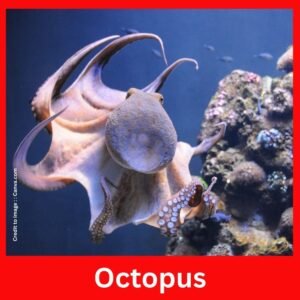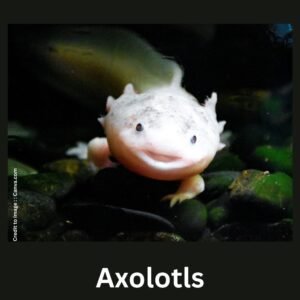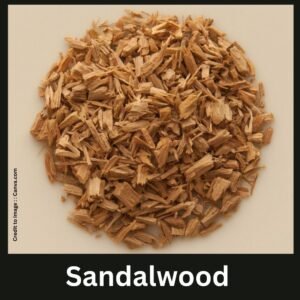The Drake Passage, situated between South America’s Cape Horn and Antarctica’s South Shetland Islands, is one of the most treacherous and scientifically significant oceanic regions on Earth. Known for its extreme weather, violent waves, and powerful currents, the passage serves as a critical connection between the Atlantic and Pacific Oceans while playing a pivotal role in regulating global ocean circulation and climate. This article explores the Drake Passage through geographical insights, historical exploration, scientific research data, and its ecological importance. By analyzing its physical conditions, marine biodiversity, and contribution to climate dynamics, we highlight the importance of ongoing scientific research and global conservation strategies.

Table of Contents
- Introduction
- Historical Significance of Drake Passage
- Drake Passage Location & Geographical Conditions
- Oceanographic and Climatic Role
- Biodiversity and Marine Ecosystem
- Scientific Research Data
- Navigational Challenges and Ship Safety
- Impact on Global Climate Regulation
- Modern Exploration and Research Stations
- Summary
- Conclusion
- FAQs (General)
- FAQs (Specific)
- References
1. Introduction
The Drake Passage, spanning approximately 800 km (500 miles) wide, is the narrowest expanse of ocean separating Antarctica from any other landmass. Named after Sir Francis Drake, the English explorer, the passage is infamous for its unpredictable storms, giant waves, and strong currents. Its strategic location makes it a vital channel for scientific expeditions, marine biodiversity studies, and climate research. The region also holds a key role in the Antarctic Circumpolar Current (ACC)—the most powerful current in the world.
2. Historical Significance of Drake Passage
- Named after Sir Francis Drake (1578), who was the first to realize a connection between the Atlantic and Pacific south of Tierra del Fuego.
- Dutch navigators Willem Schouten and Jacob Le Maire made the first recorded voyage through the passage in 1616.
- It became an essential trade route before the opening of the Panama Canal (1914), though extremely dangerous.
3. Drake Passage Location & Geographical Conditions
- Location: Between Cape Horn (South America) and South Shetland Islands (Antarctica).
- Width: ~800 km (500 miles).
- Depth: Average Depth Approx. 3,400 m or 11,000 feet. Maximum Depth Approx. 4,800 m or 15,750 feet.
- Latitude Range: 56°S to 60°S.
- Currents: Antarctic Circumpolar Current (ACC).
- Winds: Known for “Roaring Forties,” “Furious Fifties,” and “Screaming Sixties.”
4. Oceanographic and Climatic Role– Drake Passage
- The Antarctic Circumpolar Current (ACC) circulates approx. 135 million cubic meters per second of water..
- Facilitates global thermohaline circulation by mixing warm and cold waters.
- Acts as a natural barrier isolating Antarctica’s climate, contributing to ice sheet stability.
5. Biodiversity and Marine Ecosystem
The Drake Passage hosts diverse marine life:
- Birds: Albatross, petrels, penguins.
- Mammals: Blue whales, orcas, seals.
- Fish: Patagonian toothfish.
- Plankton: Fundamental to the marine food chain and essential in regulating the ocean’s carbon cycle.
6. Scientific Research Data Table– Drake Passage
| Parameter | Value / Observation | Source / Notes |
| Average Width | ~800 km (500 miles) | Hydrographic Surveys |
| Average Depth | ~3,400 m | Oceanographic Data |
| Maximum Depth | ~4,800 m | Bathymetric Studies |
| Water Transport (ACC) | 135–150 Sv (Sverdrups) | Climate Research |
| Wind Speed (avg) | 30–40 knots (55–75 km/h) | Meteorological Data |
| Significant Wave Height | 6–10 m, can exceed 15 m | Marine Studies |
| Sea Surface Temperature | 0°C to 5°C | NOAA Data |
| Salinity | ~34.5 PSU | Antarctic Surveys |
| Annual Shipping Crossings | 800–1000 vessels (tourism + research) | Shipping Records |
| Iceberg Encounters | Common in winter; hazardous to navigation | Maritime Reports |
7. Navigational Challenges and Ship Safety
- Sudden storms, giant swells, and iceberg drifts make navigation risky.
- Modern ships use advanced radar and satellite forecasting.
- Cruise tourism to Antarctica often passes through Drake Passage, leading to strict IAATO (International Association of Antarctica Tour Operators) guidelines.
8. Impact on Global Climate Regulation– Drake Passage
- Key in regulating Earth’s heat balance.
- Facilitates deep water formation, vital for oxygen transport in oceans.
- Plays a key role in the sequestration of atmospheric Carbon di oxide i.e. CO₂.
9. Modern Exploration and Research Stations
- Research conducted by British Antarctic Survey, NOAA, and Argentine Antarctic Institute.
- Autonomous underwater vehicles (AUVs) are used to study and chart the movement of ocean currents.
- Data helps model climate change impacts on polar regions.
10. Summary
The Drake Passage is a critical maritime and scientific corridor. Though dangerous for navigation, it supports rich biodiversity and plays a central role in global ocean circulation. Its unique conditions make it an open laboratory for climate change research.
11. Conclusion
The Drake Passage continues to be recognized as one of Earth’s most intense and intriguing marine passages. Beyond its legendary storms, it influences global climate, sustains marine ecosystems, and provides critical insights into ocean dynamics. Protecting its fragile environment while continuing research is essential for the future of climate science and marine conservation.
12. FAQs (General)
Q1. Where is the Drake Passage located?
It lies between Cape Horn (South America) and the South Shetland Islands (Antarctica).
Q2. Why is the Drake Passage so dangerous?
Because of high winds, strong currents, and massive waves.
Q3. How wide is the Drake Passage?
Around 800 km (500 miles).
Q4. What current flows through the Drake Passage?
The Antarctic Circumpolar Current (ACC).
Q5. What is the average depth?
About 3,400 meters.
Q6. Who discovered the Drake Passage?
Named after Sir Francis Drake, but first navigated in 1616 by Dutch explorers.
Q7. Can tourists cross the Drake Passage?
Yes, via cruise ships to Antarctica.
Q8. What wildlife lives in the Drake Passage?
Whales, seals, penguins, albatrosses, and many fish species.
Q9. Is the Drake Passage colder than the Arctic?
Yes, because it is closer to Antarctica and influenced by polar winds.
Q10. Is it important for global climate?
Yes, it drives ocean circulation and regulates global temperatures.
Q11. How long does it take to cross?
Usually 36–48 hours by ship.
13. FAQs (Specific – Scientific & Research)
Q1. How much water does the ACC transport through Drake Passage?
The Antarctic Circumpolar Current (ACC) circulates approx. 135 million cubic meters per second of water.
Q2. What is the typical wave height?
6–10 meters, sometimes over 15 meters during storms.
Q3. What role does it play in CO₂ regulation?
It helps trap & transport carbon to deep oceans.
Q4. What is the latitude of the Drake Passage?
Between 56°S and 60°S.
Q5. How does it influence thermohaline circulation?
By mixing warm Atlantic and cold Pacific waters.
Q6. What research is conducted in the passage?
Climate modeling, oceanography, and biodiversity monitoring.
Q7. Which organization monitors marine traffic here?
Primarily IAATO and international maritime authorities.
Q8. What is the sea surface temperature range?
From 0°C to 5°C.
Q9. Are icebergs common in the Drake Passage?
Yes, particularly in winter months.
Q10. How many ships cross it annually?
Approximately 800–1000 vessels (research + tourism).
Q11. What is the salinity level?
Around 34.5 PSU (Practical Salinity Units).
14. References
- National Oceanic and Atmospheric Administration (NOAA), Oceanographic Data Reports.
- British Antarctic Survey – Drake Passage Research Publications.
- International Hydrographic Organization (IHO) – Bathymetric Data.
- IPCC Special Reports on Oceans and Cryosphere (2019).
- International Association of Antarctica Tour Operators (IAATO) Guidelines.
Global Appeal for Support: Prakriti Darshan – Nature and Environment Magazine & Journal
Dear Respected Leaders, Organizations, and Changemakers,
At a time when the world faces unprecedented challenges of climate change, biodiversity loss, deforestation, pollution, and global warming, collective action has become the need of the hour. The responsibility of protecting our planet cannot rest on a few shoulders—it must be a shared mission across governments, global institutions, businesses, academia, and communities.
About Us
Prakriti Darshan – Nature and Environment Magazine (www.prakritidarshan.com) and Prakriti Darshan :International Journal of Environment Science & Multidisciplinary Studies (www.prakritidarshanjournal.com) are global initiatives dedicated to:
- 🌱 Promoting environmental awareness and education.
- 🌎 Supporting United Nations Sustainable Development Goals (SDGs).
- 🦋 Highlighting the role of climate action, biodiversity conservation, renewable energy, eco-friendly practices, and sustainable living.
- 📚 Encouraging research and publications through our international journal.
- 🌳 Driving grassroots action through plantation, seminars, and workshops in schools, institutions, and communities.
Our Global Objectives
We aim to:
- Publish and distribute our environmental magazine free of cost worldwide to increase public awareness.
- Extend the magazine into multiple languages to reach diverse populations.
- Organize environmental seminars, conferences, and workshops both online and offline at schools, universities, and community levels.
- Build a platform for research, policy dialogue, and public participation in environmental conservation.
Our Humble Appeal
We invite Governments, UNEP, UNDP, UNESCO, FAO, IUCN, World Bank, international NGOs, corporates, green businesses, and philanthropists to come forward and strengthen this movement by:
✅ Sponsorship & Advertisements – Support us in reaching millions with environmental knowledge.
✅ Membership Programs – Join our network of eco-conscious individuals and organizations.
✅ Funding Support – Help us distribute Prakriti Darshan Magazine worldwide free of cost.
✅ Collaborations – Partner with us to host environmental events, campaigns, and research projects.
✅ Publishing with Us – Academics, researchers, and writers are invited to publish in our journal to spread innovative ideas globally.
Why Support Us?
By supporting Prakriti Darshan, you directly contribute to:
- SDG 4: Quality Education – spreading environmental education.
- SDG 13: Climate Action – mobilizing communities against climate change.
- SDG 15: Life on Land – promoting biodiversity conservation and plantation drives.
- SDG 17: Partnerships for the Goals – building a global movement through collaboration.
Together, We Can Create Change
Your support will help us expand our reach globally, develop multi-language editions, train young eco-leaders, and inspire millions to protect our only home—Planet Earth.
🌿 Let us join hands to create a world where environment and humanity coexist in harmony.
📩 Contact us through our portals:
- 🌐 www.prakritidarshan.com
- 🌐 www.prakritidarshanjournal.com
- WhatsApp :+91-8191903650 & +91-8191903651
- E mail : support@prakritidarshan.com & editor@prakritidarshanjournal.com
📢 Join the movement – Sponsor, Advertise, Become a Member, Publish, and Support Awareness Campaigns.
👉 Prakriti Darshan is not just a magazine—it is a voice for the planet. With your partnership, we can make it louder, stronger, and global.
Click for more information
- Visit www.prakritidarshan.com for Free Magazine ,Free membership benefits ,offered price magazine @ Rs.1 or Rs.11 only and more ……
Donate for “Hari Ho Vashundhara & Har school Hariyali “ Plantation campaign Associated Partner NGO :GDSS NGOwww.gdssngo.org
🎗️Sponsor Prakriti Darshan Magazine – Support our environment mission.
📚 Explore the Environment Magazine – Read our latest and past issues.
✍️ Read Editor’s Article or Blog – Insightful thoughts from our editorial desk.
🌱 Join Membership – Be part of India’s leading green community.
🤝 Become an NGO Impact Story Partner – Share your grassroots impact nationwide.
🏢 Become a Company Partner – Showcase your CSR, ESG, or sustainability work.
👤 Become an Individual Partner – Volunteer, write, and raise your green voice.
📢 Advertise with Us – Reach eco-conscious readers across India.
BALA DATT SHARMA,
MANAGING EDITOR ,
PRAKRITI DARSHAN-NATURE AND ENVIRONMENT MAGAZINE
- Drake Passage: The World’s Roughest Sea Route Between Atlantic and Pacific Oceans - August 22, 2025
- Top 10 Natural Parks in the USA: Biodiversity, Geography & Global Relevance - August 21, 2025
- Exploring the Best Natural Parks in USA: Biodiversity, Sustainable Tourism, and Role in SDGs - August 21, 2025





